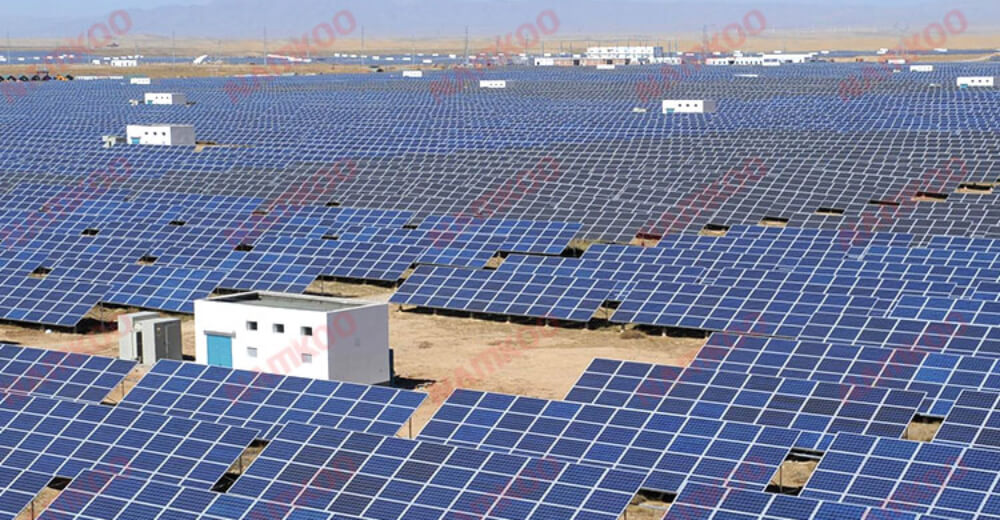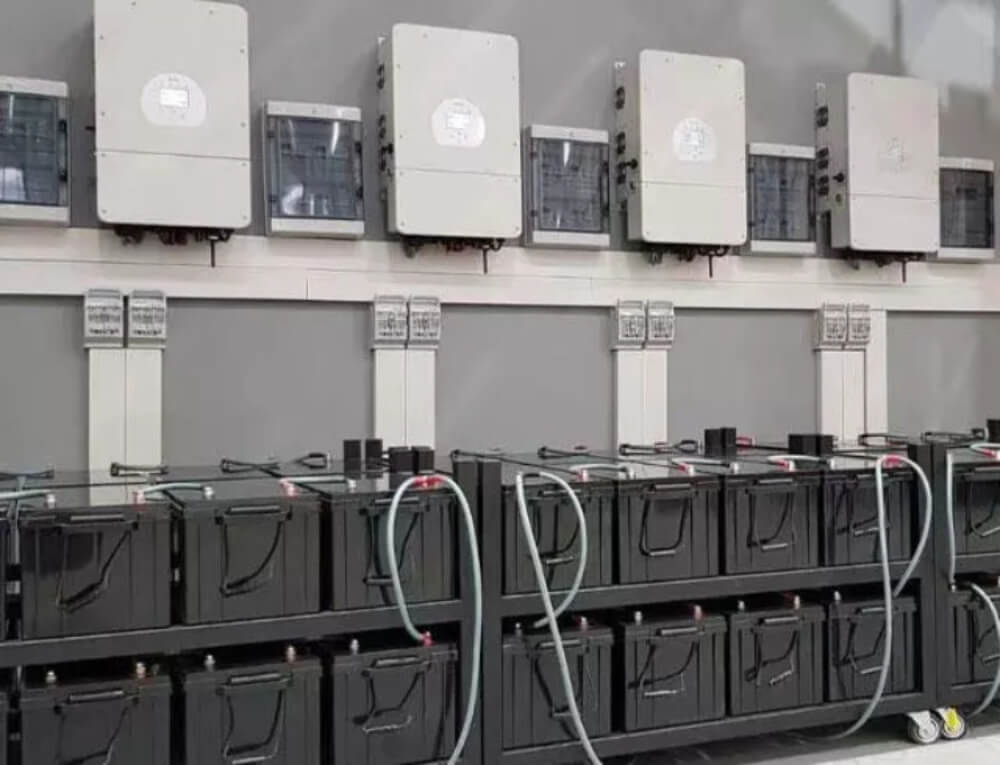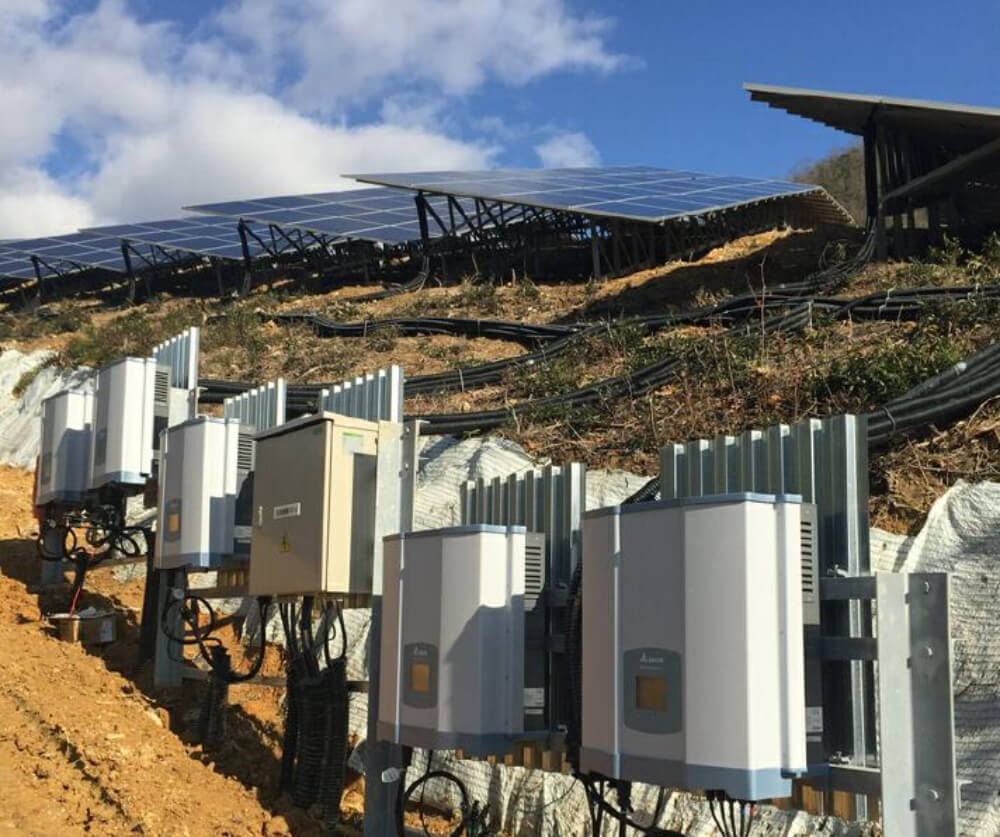Four types of grid-connected inverter settings for photovoltaic power generation
 namkoo solar
namkoo solar
The grid-connected inverter settings in solar photovoltaic power generation systems are divided into: centralized, master-slave, Distributed and string type.
The design capacity of solar photovoltaic power generation system can range from a few kilowatts to hundreds of kilowatts, or even megawatts. Due to the various forms of domestic photovoltaic power generation combined with buildings, the selection of equipment needs to be optimized according to the actual situation of solar cell array installation (such as module specifications, installation orientation, etc.). The grid-connected inverter settings in solar photovoltaic power generation systems are divided into: centralized, master-slave, Distributed and string type.

Centralized type
The centralized grid-connected method is suitable for solar cell arrays with the same installation orientation and specifications, and a single inverter is used to realize the centralized grid-connected power generation scheme during electrical design.
For large grid-connected PV systems, if the solar cell arrays are installed with basically the same orientation, inclination and shading, large centralized three-phase inverters are usually used.
The main advantages of this method are: fewer PV grid-connected inverters are used in the overall structure, which makes the installation and construction simpler; the centralized inverters used have high power and higher efficiency, usually the efficiency of large centralized inverters is about 2% higher than distributed inverters, and for 9.3MWp PV developed system, the initial cost is lower because fewer inverters are used;
There are fewer grid-connected access points and the output power quality is higher. The main disadvantage of this method is that once the grid-connected inverter fails, it will cause a large area of the solar PV power system to be out of service.
Master-slave type
The master-slave structure can be used for large photovoltaic power generation systems. The master-slave structure is actually a type of centralized type, and the main feature of this structure is that 2 to 3 centralized inverters are used, and the total power is divided equally among several inverters.
When the radiation is low, only one inverter works to improve the efficiency of the inverter when the solar cell array output power is low; when the solar radiation rises and the solar cell array output power increases beyond the capacity of one inverter, the other inverter automatically comes into operation. To ensure that the inverters run on an equal schedule, the master-slave inverters can automatically rotate the master-slave configuration.
The initial cost of the master-slave structure is higher, but it can improve the efficiency of the inverter operation of the PV power system, and for large PV systems, the efficiency improvement can generate greater economic benefits.

Distributed
The distributed grid-connected power generation method is suitable for the installation of solar cell arrays with different orientations or specifications. In the electrical design, solar cell arrays with the same orientation and the same specifications can be centrally connected to the grid through a single inverter, and large distributed systems are mainly used for solar cell arrays with different orientations, inclinations and solar shadows.
A distributed system is a string of PV modules with the same orientation, tilt angle and no shading, and one or several strings form a solar cell sub-matrix, with a grid-connected inverter installed to match.
The main disadvantages of distributed grid-connected power generation are: for large and medium-sized PV power generation systems of hundreds of kilowatts or even megawatts, multiple grid-connected inverters need to be used, and the initial inverter cost may be higher; because of the large number of inverters used, the AC side of the inverter and the access point to the utility grid are also more, and the output of the inverter needs to be connected in parallel on the AC side of the PV power generation system, which has a certain impact on the quality of the grid. This has an impact on the quality of the grid.

String type
String inverters are connected to one inverter for each PV module, and each PV module has a separate maximum power peak tracking, so that the PV modules and inverters can work better together.
The introduction of the "master-slave" concept between strings allows the system to link several strings of PV cells together and let one or more of them work to produce more power when a single string of power cannot make a single inverter work. The latest concept of several inverters forming a "team" with each other instead of a "master-slave" concept takes the reliability of the system a step further. Currently, transformerless string inverters are predominant.
Multi-string inverters use the advantages of centralized and string inverters, avoiding their disadvantages, and can be applied to PV plants of several kilowatts.



































